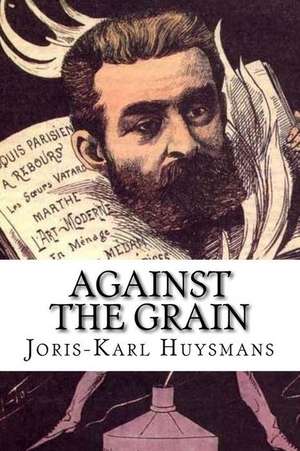Against the Grain
Autor Joris Karl Huysmans Editat de Edibooks Traducere de John Howarden Limba Engleză Paperback
| Toate formatele și edițiile | Preț | Express |
|---|---|---|
| Paperback (7) | 47.00 lei 3-5 săpt. | |
| CREATESPACE – | 47.00 lei 3-5 săpt. | |
| – | 69.14 lei 3-5 săpt. | |
| – | 71.51 lei 6-8 săpt. | |
| Aegypan Press – 31 iul 2006 | 108.57 lei 6-8 săpt. | |
| Book Jungle – 12 mar 2008 | 124.55 lei 6-8 săpt. | |
| CHIZINE PUBN – 24 aug 2017 | 128.96 lei 17-24 zile | |
| CreateSpace Independent Publishing Platform – | 134.88 lei 6-8 săpt. | |
| Hardback (1) | 211.27 lei 6-8 săpt. | |
| Aegypan Press – 30 iun 2006 | 211.27 lei 6-8 săpt. |
Preț: 71.51 lei
Nou
Puncte Express: 107
Preț estimativ în valută:
13.68€ • 14.34$ • 11.31£
13.68€ • 14.34$ • 11.31£
Carte tipărită la comandă
Livrare economică 11-25 aprilie
Preluare comenzi: 021 569.72.76
Specificații
ISBN-13: 9781534857520
ISBN-10: 1534857524
Pagini: 172
Dimensiuni: 152 x 229 x 9 mm
Greutate: 0.24 kg
ISBN-10: 1534857524
Pagini: 172
Dimensiuni: 152 x 229 x 9 mm
Greutate: 0.24 kg
Notă biografică
Charles-Marie-Georges Huysmans (1848 - 1907 in Paris) was a French novelist who published his works as Joris-Karl Huysmans. He is most famous for the novel À rebours (1884, published in English as Against the Grain or Against Nature). He supported himself by a 30-year career in the French civil service. Huysmans' work is considered remarkable for its idiosyncratic use of the French language, large vocabulary, descriptions, satirical wit and far-ranging erudition. First considered part of Naturalism, he became associated with the decadent movement with his publication of À rebours. His work expressed his deep pessimism, which had led him to the philosophy of Arthur Schopenhauer. In later years, his novels reflected his study of Catholicism, religious conversion and becoming an oblate. He discussed the iconography of Christian architecture at length in La cathédrale (1898), set at Chartres and with its cathedral as the focus of the book.
